Ideas
Prime Sikh Body Wants Upper-Caste And Dalit Sikhs To Pray In The Same Gurudwaras. Will It Work?
Swati Goel Sharma
Apr 06, 2018, 07:43 PM | Updated 07:43 PM IST
Save & read from anywhere!
Bookmark stories for easy access on any device or the Swarajya app.
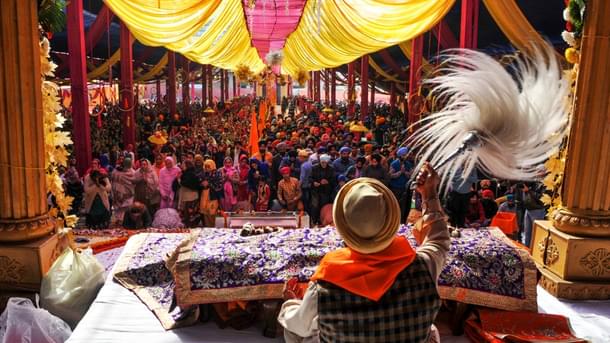
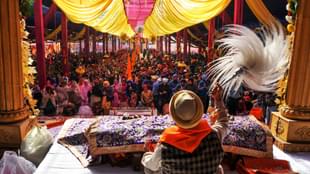
When Ranjit Kaur and her husband Kaka Singh approached the ‘main’ gurudwara in their Maanwala village in Dhuri tehsil of Punjab’s Sangrur district to perform some religious rituals, they were told to go instead to their “own gurudwara”.
The Dalit couple had wanted to hold the antim ardas bhog (funeral rites) of their mother in January, but the moment they began stocking the provisions in the premises, eyebrows were raised. They were eventually refused permission and the use of utensils.
“Tuhada apna gurudwara ae, tussi apne gurudwarey vich kyun ni paandey bhog (You have your own gurudwara, why don’t you hold the bhog there?),” the Sikh couple was reportedly told by the village panchayat.
But isn't Sikhism supposed to be caste-less and gurudwaras welcoming of all devotees irrespective of caste and creed? Isn't this precisely why all Sikh men use the surname 'Singh' and all Sikh women 'Kaur'?
Well, it is in principle, but the reality is quite different.
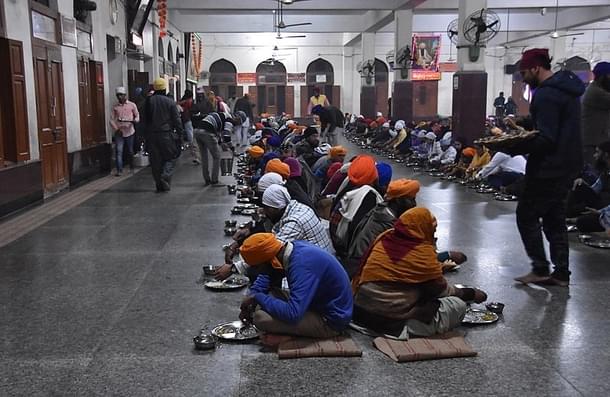
Sikhs belonging to the so-called low castes don't have it easy. When a rights initiative, Abroo, studied the caste phenomenon in Punjab some years ago, they stumbled upon shocking cases of systemic segregation in gurudwaras. Dalit Sikhs were given ‘amrit’ (as part of the Khalsa baptism ceremony) from a separate utensil, they were derogatorily referred to as chauthey paurey wale (people from the fourth step) and prohibited from serving langar (free lunch) because “they look dirty”.
It’s more subtle in other cases. Nazir Singh, a Dalit Sikh villager near Ludhiana, told Swarajya that his ilk, even if allowed in langar halls, have chapatis “dropped” in their plates instead of served hospitably. “If we join a group of men discussing important matters in the gurudwara, everybody goes silent,” he said.
Such discrimination has led Dalit Sikhs to set up their own shrines all across Punjab. They worship like they do in any other gurudwara, observe all traditional Sikh rituals, and celebrate all the major Sikh festivals. But each caste group tends to make donations in their own shrines.
This is not only a matter of embarrassment for the clergy, as it reduces the vision of a caste-less Sikh society to mere rhetoric; it is also, as admitted by religious authorities, worrisome, as it leaves the discriminated vulnerable to proselyting religions. When 40 'low-caste' Sikhs converted to Christianity in Tarn Taran district in 2012, it rang alarm bells in the community.
Efforts are now afoot to demolish these caste walls in Sikh places of worship. The Shiromani Gurdwara Parbandhak Committee (SGPC), the single-largest representative body of Sikhs in the world that manages gurudwaras in Punjab, began a campaign in February. Called “One village, one gurudwara”, it wants to merge multiple caste gurudwaras in every village into one centralised gurudwara.
“It’s a first of its kind initiative,” said Harjinder Singh Jhaku, a Dalit leader from Shiromani Akali Dal (SAD). “It’s a tragedy that Sikhs today have adopted what Guru Nanak fought against (casteism). It’s a shame that we have given religious sanction to caste gurudwaras.”

Dalit Sikhs, who roughly form 28 per cent of all Sikhs in Punjab, largely comprise the Mazhabis, who originally belonged to the Chuhra caste, and Ravidasis and Ramdasis, who trace their origins to the Chamar caste. Punjab has the highest Scheduled Caste (SC) population in India, at about 32 per cent, and about 60 per cent of the SCs practice Sikhism.
An SGPC member from Ludhiana, Gurcharan Singh Grewal, said mushrooming of ‘caste gurudwaras’ is a trend visible in the last three decades and politics has played a definite role. On the other hand, Dalits say that it was sustained humiliation that was the trigger. In most cases, they converted their dharmashalas into gurudwaras.
It’s common in villages to see separate Mazhabi, Ravidasi, and Ramdasi (all “untouchable castes”) gurudwaras along with upper-caste Jat-dominated ones; Ramgarhia (a Backward Class, though socially equal in status to Jats) gurudwaras have sprung up mainly in cities. SGPC estimates that for a total of 12,854 villages in Punjab, there are 50,000 gurudwaras. The organisation is currently gathering data on the number of gurudwaras in each village and has come across extreme cases such as one near Amritsar with 44 gurudwaras!
“Villages with one gurudwara are so few that you can count on fingers,” says Grewal. One of these is the village Chakar in Jagraon tehsil of Ludhiana district, and it was here that SGPC kick-started the initiative by honouring gurudwara management. Harchand Singh, a committee member, told Swarajya that the village panchayat has thwarted any attempts to build another gurudwara through talks. Chakar is one of the more modern villages in the belt, riding high on “NRI (non-resident Indian) money”.
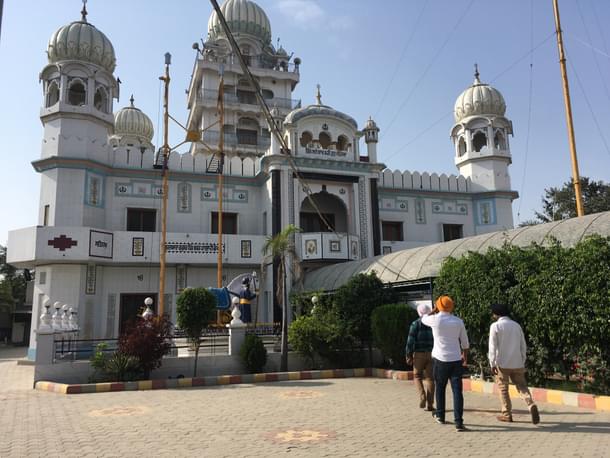
“As of now, we are targeting villages with two gurudwaras. That’s the easiest,” said Grewal. They met with success two weeks ago when Dhurkot village in Faridkot district agreed to tear down a wall built in the centre of a gurudwara nine years ago. As in this gurudwara, the SGPC plans to use vacated spaces for setting up religious libraries and music classes.
SGPC members admit they have a difficult task ahead. A visit to a village in Ludhiana district, also named Dhurkot, reveals the complications involved. The village with about 4,000-strong population has five gurudwaras – two for the upper castes, two for Ravidasis, and one for “refugees” (those who migrated from what is now Pakistan at the time of partition, also considered upper-caste).
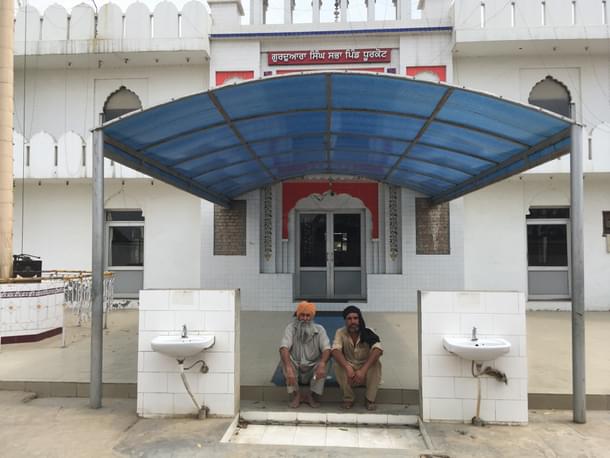
Parminder Singh, a committee member of the 'main gurudwara', had not heard of the SGPC campaign, but was thrilled with the idea. Not because of the SGPC’s larger purpose to unite Sikhs, but for more immediate relief from the “noise pollution”.
“Every morning at four, loudspeakers simultaneously begin singing shabad (devotional songs). It all ends up as incoherent noise,” he said.
However, some 400m away at a Ravidasi gurudwara, committee member Budh Singh isn’t so optimistic. He liked the proposal, but wondered which of the five structures would be chosen. “Ours is the biggest and is also registered with Akal Takht. It should be the one. But will they come worship here?”
Surjot Kaur, also a Ravidasi, laughed at the suggestion. “They don’t even acknowledge it as a gurudwara. They call it a Ravidas temple. They won’t,” she said.
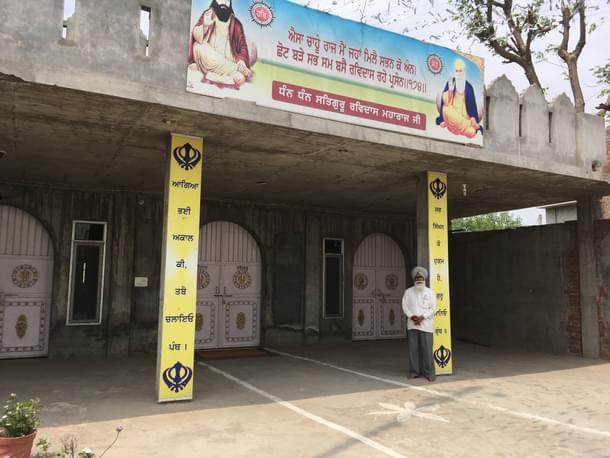
Village sarpanch Sher Singh liked the idea, but did not seem to know how to initiate the process. “It’s a matter of getting everyone together to talk. It’s a big task.”
“Je SGPC da danda hoyega, taan sab kujh ho sakda (If SGPC is strict, it can happen),” he said.
Others, such as Harchand Singh of Chakar gurudwara, express doubts about the success of the campaign. “Next to impossible,” he said, referring to villages with more than two gurudwaras. “What will you even do with the vacated buildings?” he wondered.
In any case, merging gurudwaras is only one of the steps in breaking caste walls. Discrimination is rampant even in death, with most villages having separate cremation grounds for different caste groups. And what about inter-caste marriage within Sikhs? Most Jat Sikhs vehemently nod in the negative.
Swati Goel Sharma is a senior editor at Swarajya. She tweets at @swati_gs.





